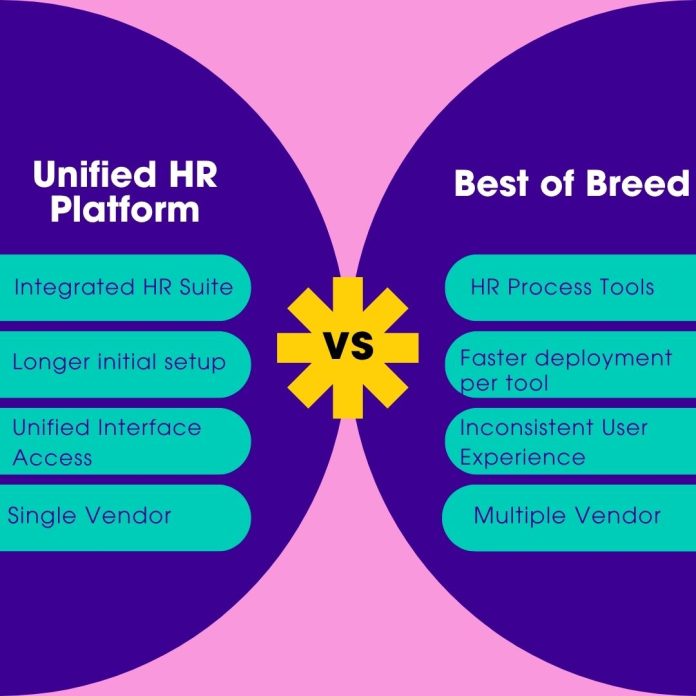The growing market of HR technology is based on the trinity of effective management of human resources, information-based decision support and compliance. The rise of competition, cost reduction measures and the recent demand on security have led to the expedited rate of HR system convergence to various sectors and industries.
HR tech investment is a major investment choice that a company should undertake when the main goal is to increase productivity, provide a better employee experience, and gain competitive advantage—especially in an HR tech market that is mushrooming with tech suppliers. Organizations often find themselves in a complex situation due to the existence of a great number of options, particularly when deciding between Unified HR Platforms Vs Best of Breed solutions.
| Category | Unified HR Platform | Best-of-Breed HR Solution |
|---|---|---|
| Definition | All-in-one system integrating multiple HR functions | Specialized tools for specific HR process |
| Implementation Time | Longer initial setup | Faster deployment per tool |
| Integration Needs | Minimal—built-in functions | High—requires connecting multiple tools |
| User Experience | Consistent UI and single login across modules | Varied UI, often creates inconsistent experience |
| Training | One system to learn; broad but centralized training | Multiple tools to learn; shorter per tool training |
| Functionality Depth | Broad but sometimes generic features | Deep, specialized features per function |
| Scalability | Scales easily across departments | May get complex with more tools |
| Cost Structure | Package pricing; lower total cost over time | Multiple licenses; higher cost if many tools are used |
| Vendor Management | Simplified—single vendor | Complex—multiple vendors to manage |
| Data Integrity | Centralized, consistent data | Dispersed; risk of silos and inconsistencies |
| Compliance Support | Easier to manage uniform security and policy | Varies per tool; harder to enforce consistency |
| Customization | Limited flexibility for niche needs | High flexibility and adaptability |
| Best For | Organizations prioritizing simplicity and integration (Large Scale Enterprises) | Organizations with complex or specialized HR needs (Small to Medium Scale Firms) |
One such scepticism stems from the decision to choose between Unified HR platforms and a Best of Breed solution. Weighing the benefits and probable impediments of each approach is essential to selecting the technology that aligns with the organization’s goal, size and complexity. In this write-up, we will explore the core differences between the two approaches and their pros and cons, providing valuable insights to facilitate an informed choice.
Understanding Best of Breed HR Solutions
The technology industry terms premium software or tools representing a niche as “Best of Breed”. In this system, there is a specialized software solution for each HR module, such as Recruitment, Payroll, Performance Management or Learning and Development. Each application has advanced features and tools customized to support specific HR processes. For example, a company may choose a top-tier applicant tracking system (ATS) renowned for its candidate sourcing and interviewing capabilities. while opting for a separate, high-rated payroll solution to handle compensation with maximum precision.
Benefits of Best of Breed Solutions
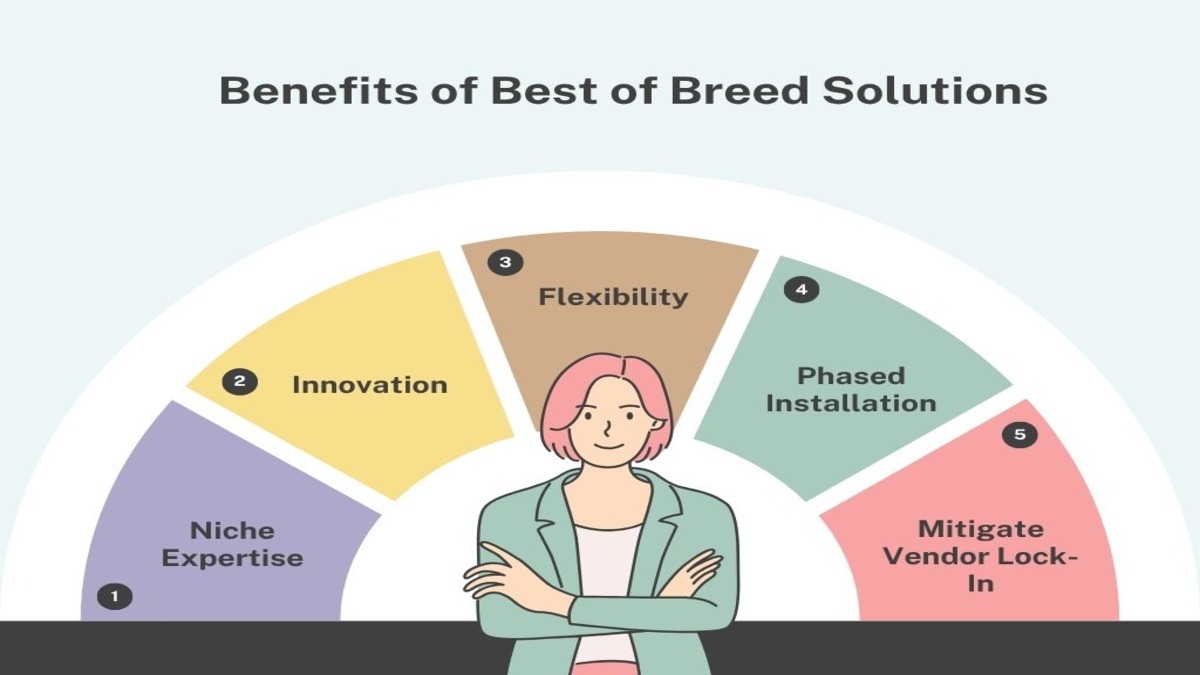
- Niche Expertise: The biggest advantage with Best of Breed is that it intends to excel in one specific area, making them specialists of their niche. They deliver deep, advanced capabilities tailored to a particular area of application. This way enterprises can pick only those tools that they actually need for their business at that moment.
- Innovation: These tools leverage the latest innovations and advancements, such as Artificial Intelligence (AI) and Machine Learning (ML), and deliver optimal performance in targeted HR processes.
- Flexibility: This modular approach allows companies to adjust to regulatory changes, upgrade or replace individual tools without overhauling the entire HR system, and easily adapt to unique business situations.
- Phased Installation: For small enterprises, these solutions are more relevant since these tools can be deployed in stages as per requirement. The company may feel the need to streamline other functions where automation is unavoidable as the business scales.
- Mitigate Vendor Lock-In: By adopting Best of Breed tools, enterprises are less dependent on a single vendor. With multiple vendors, there’s a better chance of negotiation, as they can compare prices and terms and pick the best bargain.
Drawbacks of Best of Breed Solutions
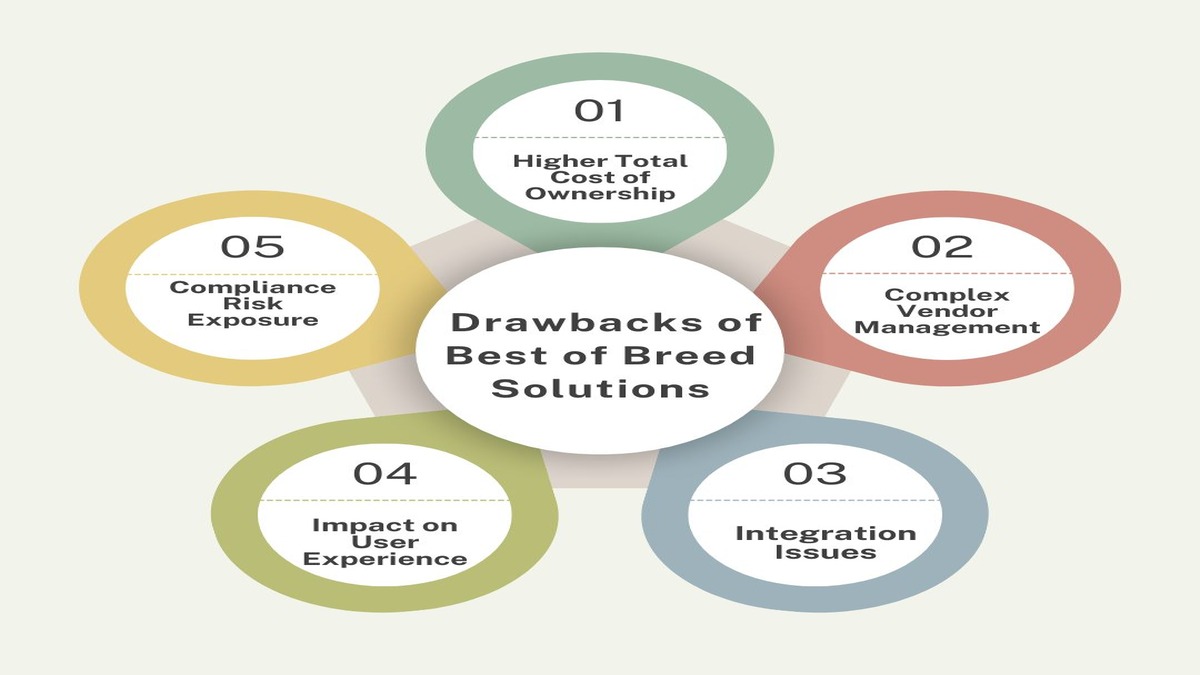
- Higher Total Cost of Ownership (TCO): Companies willing to avail advanced software capabilities for their business needs might have to spend more in terms of overall costs for the entire product lifecycle. The expenses include paying for multiple licenses for initial setup, additional costs for upgrades, investments in integration services (API’s), and expenses involving multiple vendors and data management.
- Complex Vendor Management: Having dedicated software for disparate functions can be complicated, as each system typically comes from a different vendor. This means managing multiple contracts and varied update cycles. Managing multiple relationships also involves considerable time, infrastructure and personnel support, further adding complexities.
- Integration Issues: While these tools excel in their niche, they can present challenges when it comes to integration, which is essential to securely connect third-party solutions for seamless flow of information. Ensuring that data syncs accurately across platforms requires extra effort, such as custom API development or middleware, which sometimes may lead to data silos if integration is mishandled.
- Impact on User Experience: Integrating multiple applications can sometimes result in a disjointed user experience, with inconsistent interfaces and workflows that may confuse users and restrict overall adoption.
- Increased Risk of Inconsistencies and Non-Compliance: HR platforms house critical employee data. Point solutions decentralize this data, making it harder to maintain integrity and ensure secure data transfers. Each vendor has to be evaluated against their certifications and data protection measures, raising the probability of non-compliance.
What is a Unified HR Platform?
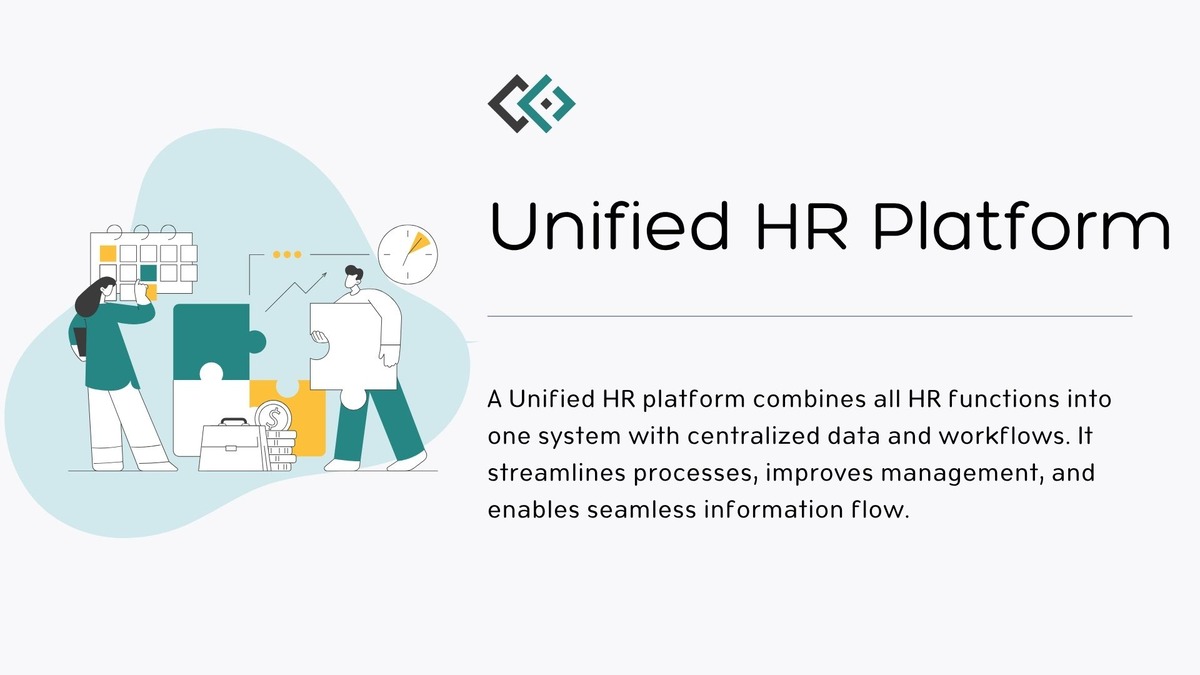
A Unified HR platform is an all-in-one solution that clubs together different functions of human resource management into a single application. It aims to bring all the core areas of HR under one roof with a centralized database offering a one-software-one-record solution. This integration enables seamless exchange of information across different HR modules, automates a broad range of HR functions and improves workforce management. Most HRMS and HCM software are built on these systems to render comprehensive HR solutions with centralized data and workflows.
Advantages of Unified HR Platforms
- Comprehensive Coverage with Quick Deployment: Designed to bring all essential HR functions into a cohesive system, eliminating the need for multiple integrations. Pre-built workflows and automation capabilities ensure faster, seamless and efficient management of HR operations.
- Economical: In most cases, a single HR suite offers packaged costs which are relatively lower than multiple standalone tools. Moreover, it can potentially save costs in the long run through lower implementation and licensing expenses, simplified vendor maintenance and economies of scale.
- Single Vendor: Unified platforms benefit from single contract management and require less IT support and maintenance with a single point of contact for troubleshooting and issue resolution.
- Enhanced Usability and User Adoption: Unified platforms with a consistent user interface minimise the learning curve for HR teams and employees while promoting higher adoption rates. A consistent design, intuitive navigation and a single login across devices and platforms further enhance the overall user experience.
- Data Integrity and Compliance: By centralizing data in a single system, these platforms ensure reliable records, maintain audit trails, and enforce standard HR policies and consistent security measures. This supports legal requirements and simplifies data access, making compliance easier, more accurate and less risky.
- Robust Reporting: With one point of reference for all employee records, this solution allows HR teams to easily assess and analyze data, supporting informed decision-making. Customizable dashboards and real-time reporting tools track trends and provide insights into workforce metrics, enabling proactive responses to employee needs.
- Scalability: These platforms often provide scalable solutions to accommodate increasing numbers of employees and evolving business needs without requiring significant overhauls or additional software purchases.
Limitations of Unified HR Platforms
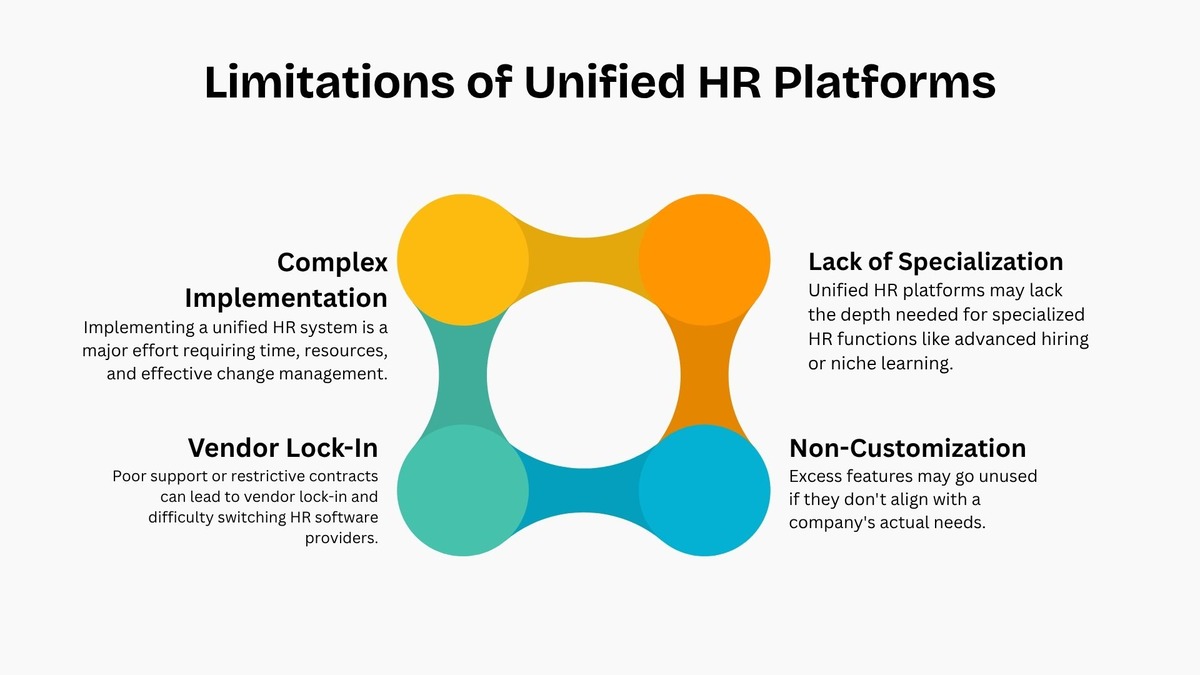
- Lack of Specialization: While unified HR platforms offer a holistic solution, they often fall short in the depth found in specialized tools. Their broad focus may result in generic features that do not adequately meet the unique needs of specific HR functions like advanced talent acquisition or niche learning programs.
- Non-Customization: Some platforms may go overboard with certain functionalities which may remain unexplored if the company doesn’t need them on a full scale.
- Vendor Lock-In: Companies may disapprove of the software for various reasons, such as technical lapses, inadequate support services or redundancy. If not carefully negotiated, a lock-in situation may arise because of proprietary services or restrictive contract terms, making it difficult to switch providers later.
- Complex Implementation: Implementing a unified HR system, despite lower integration complexity, is still a major effort. It demands time, resources, and strong change management, with challenges like extensive configuration and testing, data migration and user resistance.
Choosing the Right One
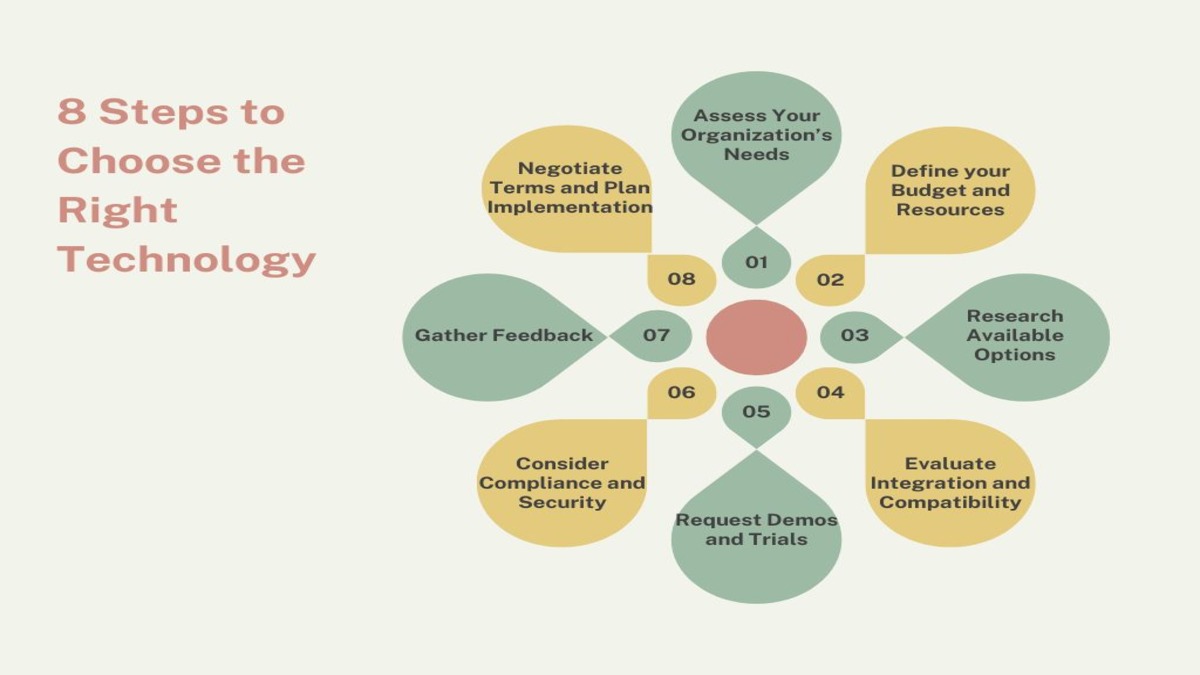
There is no linear way to handpick a technology that actually works for you. Ideally, you may expect a solution to meet all your automation needs, be easy to work with and be cost-effective. But the possibility of finding everything in one place is mostly up in the air.
All-in-One Solution or Best of Breed?
This debate has been lingering around for a decade now. Choosing the right technology for your enterprise can greatly affect your HR operations and overall business outcome. To make an informed choice between two contrasting approaches requires careful deliberation and a structured evaluation process. Here are the steps that might help you in choosing a solution that corresponds with your needs.
- Assess Your Organization’s Needs: Understand your current HR processes, pain points and future goals. Identify which HR functions are most critical along with the level of integration required.
- Define your Budget and Resources: Establish a realistic budget that not only includes software costs but also implementation, training and ongoing support. Evaluate your internal IT capabilities and determine if you require vendor support for deployment and maintenance.
- Research Available Options: Examine both unified platforms that provide end-to-end HR solutions and specialized best-of-breed products that focus on specific domains. Seek vendors with proven track records, favourable customer feedback, and scalable solutions that can expand alongside your business.
- Evaluate Integration and Compatibility: If you lean towards best-of-breed solutions, make certain that they can seamlessly integrate with your existing systems. For unified platforms, verify that the suite encompasses all your essential HR functions with the extent of depth or customization.
- Request Demos and Trials: Engage with selected vendors to see their products in action. Practical demonstrations and trial periods allow you to assess user experience, functionality and usability from the viewpoints of both the HR team and employees.
- Consider Compliance and Security: Ensure that the technology adheres to applicable labour laws and data protection regulations. Security features, including role-based access, data encryption and audit trails, are essential for protecting sensitive employee information.
- Gather Feedback: Engage members of the HR team, IT personnel, and end users in the assessment process. Their insights can reveal practical factors and assist in identifying potential challenges prior to reaching a final decision.
- Negotiate Terms and Plan Implementation: Once you select a solution, thoroughly review contracts, service level agreements, and support options. Create an implementation plan that entails timelines, training and change management strategies to ensure a seamless transition.
Closure
There are mixed blessings in adopting either of the two solutions. Both have distinct strengths suited to different organizational scenarios.
Unified platforms benefit organizations seeking simplicity, scalability and efficiency by consolidating HR functions and reducing the need to manage multiple systems and vendors. However, it’s essential to assess whether the platform meets your specific needs and can adapt as the business grows.
Best of Breed HR solutions suit businesses with complex needs and the infrastructure to manage multiple systems. They enable a customized HR tech ecosystem that enhances efficiency and employee experience. However, they also pose challenges like data silos, inconsistent user experience, and greater IT complexity. Effectively managing integrations and multiple vendors requires meticulous planning and supplementary resources.
Although,an element of risk persists with these investments, weighing the pros and cons and aligning them with your needs can help you confidently arrive at a well-informed decision that boosts your HR productivity. Ultimately, the road you take depends on where you wish to go.
FAQs for Unified HR Platforms Vs Best of Breed
Read More: HRIS vs HRMS vs HCM: Which Is Right HR Software for Your Business
Read More: HR Tech Trends: What to Expect in the Future of Work

